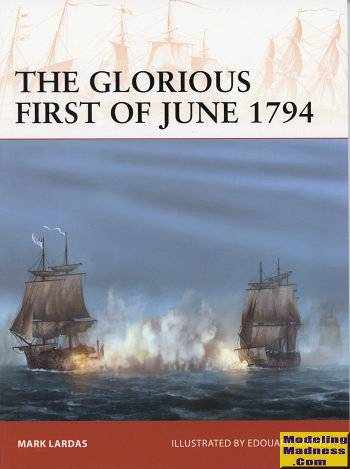 I'm
one of those folks who likes to read about battles in the age of sail. This is a
period of time for most, between the 1600s and the middle of the 1800s when
steam power started to be used in military vessels. Like tactics in most armies
of the time, it meant set pieces were line-ups of ships slugged it out between
each other. These battles were bloody and often involved boarding the other
vessel to cut down the crew and take over the ship.
I'm
one of those folks who likes to read about battles in the age of sail. This is a
period of time for most, between the 1600s and the middle of the 1800s when
steam power started to be used in military vessels. Like tactics in most armies
of the time, it meant set pieces were line-ups of ships slugged it out between
each other. These battles were bloody and often involved boarding the other
vessel to cut down the crew and take over the ship.
Ships often fought until they were no longer able to
move. Much of the strategy involved de-masting the enemy ship in order to
prevent it from maneuvering or escaping. Since crews were paid extra for
capturing enemy ships, sinking them or setting them afire were not the norm.
During this period of time, the Royal Navy was very much
the king of the seas. The UK put a lot of money into maintaining a large and
powerful navy to protect their far-flung empire. Some of the standard rivals of
the time were the Spanish and the French. Considering the current situation
between these three nations, it is hard for us to believe they were at one time
and for a long time, enemies.
Around the time of this battle, the French Navy was not
quite the same navy that came to the aid and basically saved the struggling
American colonies in the late 1780s. Indeed, France was filled with
anti-monarchal fervor and quickly rid itself of its king and much of the ruling
royalty in a fairly bloody revolution. This also purged its army and navy of
most of its leadership. Similar to the Soviet Union of the 20th century, the
military had a number of purely political appointees, whose loyalty to the state
outweighed their actual abilities to command.
Revolutionary France also managed to isolate itself from
the rest of Europe, with the consequence that when the nation faced food
shortage issues, there was no one nearby to assist. Nations once friendly would
not sell food, so this led France to look to the United States for assistance.
The problem was getting it from there to France. It would take literally
hundreds of ships on a voyage that would take weeks or even months.
So the largest convoy of ships yet assembled started to
make the voyage once winter Atlantic storms abated. The French Navy had some
ships to escort the convoy, but the real issue was the Royal Navy, which was
aware of the scheme and determined to destroy the cargo ships. The job of the
French Navy was to prevent this.
Thus began a cat and mouse name where the French were
determined to let the convoy arrive, regardless of the cost and the British
equally determined to stop it. It resulted in the only battle in the age of sail
fought on the high seas. It was so far from land that it couldn't be given a
name based on a point of land. It is called Glorious by the winners of the
battle.
The author has done a superlative job of telling the
story of this oft-forgotten battle. He looks at the different classes of ship
that participated as well as the various commanders and the level of training of
the crews. Thanks to some great maps, understanding the events of the battle are
quite clear. There are some superb period paintings used for reference photos
and Edouard Groult provides several excellent two page painting to help
illustrate these events.
It makes for an excellent read that readily draws you
into the narrative. Highly recommended.
November 2019
Copyright ModelingMadness.com. All rights reserved.
For more on the complete line of Osprey books,
visit www.ospreypublishing.com .
If you would like your product reviewed fairly and quickly, please
contact
me or see other details in the
Note to
Contributors.
 I'm
one of those folks who likes to read about battles in the age of sail. This is a
period of time for most, between the 1600s and the middle of the 1800s when
steam power started to be used in military vessels. Like tactics in most armies
of the time, it meant set pieces were line-ups of ships slugged it out between
each other. These battles were bloody and often involved boarding the other
vessel to cut down the crew and take over the ship.
I'm
one of those folks who likes to read about battles in the age of sail. This is a
period of time for most, between the 1600s and the middle of the 1800s when
steam power started to be used in military vessels. Like tactics in most armies
of the time, it meant set pieces were line-ups of ships slugged it out between
each other. These battles were bloody and often involved boarding the other
vessel to cut down the crew and take over the ship.